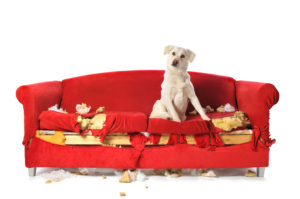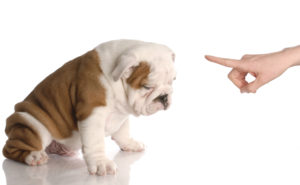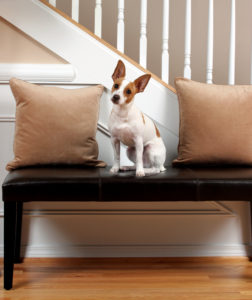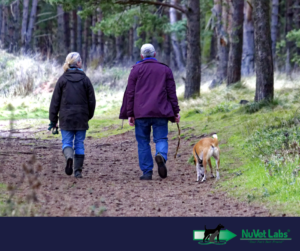Relocating can be a stressful process for most humans. For your pet, it can be even more traumatic, as he doesn’t really understand what is happening. The following tips will help you ease the transition for your dog or cat.
Vetting
It is important to ensure that your pet is up-to-date on all of his shots and vetting. You should also check with the government or Animal Control officers in your new town to see if there is any special vetting or vaccination requirements in your new location.
Microchip
All pets should be micro chipped, but if your pet hasn’t had this done, you should take care of it before you begin your travels. Your pet may become confused and get away from you during the trip. He may also head for his former home once you get to your destination. A microchip will help ensure that he is identified and returned to you if he gets lost. If your pet is already micro chipped, make sure you update your contact information with the company that issued the chip.
Tags
Your pet should also have a collar with an identification tag attached to it during your travels. Normal citizens may not have access to a microchip reader, or know that they can take a found pet to a veterinarian or animal shelter to have the chip scanned. When your pet wears identification, it’s easy for a Good Samaritan to help reunite you.
License
When you get to your new home, you should stop by the local courthouse or Animal Control Office to obtain a license for your pet if necessary. These licenses are typically inexpensive, and keep your pet legal with the local government. A current pet license can also protect you from some types of legal liability. Your homeowner’s insurance company may also require you to keep your pet licensed with the local government.
Insurance
Again, when you move to a new home, make sure you contact the company that issues your homeowner’s insurance policy to update your information. If your pet is not listed on this policy, you should take care of that right away. This will protect you and your pet from most liability in case anything happens.
Settling In
Once you get to your new home, give your pet time to adjust and settle in. Show him his new digs and spend lots of time with him to help him get the lay of the land. It’s also helpful to set up his belongings just like they were at the last home. Familiar objects will help him understand that this is his new home, and you won’t leave him.
Diet
You should also feed your pet a healthy diet, made up of high-quality foods. It can be less hassle to resort to junk food and fast food when traveling, but don’t fall into this trap. A proper diet, supplemented with NuVet Plus will keep your pet healthy and happy during all your travels.
When You Go to Work
Just like children, dogs can feel anxious or insecure when their parents are away. Most pet parents have to leave their dogs when they head to work each day, and you may not even realize that your dog feels sad, upset and stressed while you are gone. If you start to notice behavioral issues or emotional issues with your dog, you may be dealing with separation anxiety. These tips will help your dog feel better while you are gone at work, and will help you reassure your pet that you will always come back to take care of it.
How Can I Help My Dog Cope with Separation Anxiety?
- Avoid making a fuss when you leave the house. You want your dog to know that it’s not a big deal that you are leaving. Some experts encourage pet owners to institute a “no contact” rule when it comes to leaving the house. You can avoid eye contact, touching and talking to your dog in order to avoid stressing your dog out about your impending goodbye.
- Make time each morning for a walk with your dog. This is quiet, quality time that you can spend with your pet, but it also helps use up some of your dog’s energy. Your pet will feel relaxed and restful when you leave, and it will not be as anxious about the fact that you won’t be around for the day.
- Create a safe and secure space for your dog to spend the day while you are gone. Some dogs with severe separation anxiety need to stay in one room while you are gone. Create a comfortable place in your house where your dog has food, water and blankets. This helps your dog feel secure, and also prevents your pup from getting into trouble.
Adding a pet nutritional supplement, such as NuVet Plus, to your dog’s diet can help boost your dog’s immune system and allow your pet to feel better both physically and emotionally. When your dog feels good both inside and out, you will find that your pet is happier and more confident — whether you are around or not.
Finding the Right Pet Sitter
If you are truly concerned for you pet’s emotional well being you can try and find a pet sitter. Finding the right person to look after your four-legged children is just as important as finding a sitter for your human kids. Pets have particular needs and unique personalities that may not work with all sitters. A little time and effort yields the best results.
Ask Around
Trusted family and friends are good resources for recommendations. If they’ve had a good experience with a pet sitter, it’s worth a look. Your veterinarian is another great referral option.
Research
Put a little effort into checking out the credentials and experience of local pet sitters. Look for someone with training in animal care, obedience, or medicine. If your pet is difficult or dominant, choose someone with previous experience handling strong-willed animals. Certified pet sitters are listed with either The National Association of Professional Pet Sitters or Pet Sitters International. If you’re looking at a pet sitting company, find out if your sitter will be the same each visit. Check their employees’ individual credentials. Individuals and companies should be bonded and insured for liability. Remember, this person is likely coming into your home when you aren’t there.
Interview
Sit down with your potential sitters. Determine their flexibility, experience and background. A face-to-face meeting gives you a better sense of their personality, attitude, reliability and compatibility. Whenever possible, have the meeting at your home with your pet. Seeing how the sitter and your pet interact is often the most important information you’ll gather when making your decision. It’s also a great way to introduce your pet to this stranger before they’re alone together. Ask the sitter to take a brief walk with your dog or play for a time with your cat to gage their comfort with each other.
Ask Questions
Confirm the sitter’s availability for the days and times that you need. Explain any dietary or medicinal needs they may have to address while with your pet. Regular feeding times and a proper schedule for supplements like NuVet Plus are important to adhere to, even when a sitter is involved. Ask the sitter – or the company – if they are affiliated with a vet should an emergency arise, or be sure they’re familiar with your vet’s location. Ask about contingency plans if a sitter is unable to make an appointment.
Check References
Call prior clients and ask questions that are relevant to your pet and your sitting needs. You likely read NuVet Plus reviews before trying it with your dog; checking references is the same idea.
The process of finding the right sitter for your furry family member may seem daunting, but by preparing with good questions, asking trusted people for referrals and insisting on personal interaction before deciding, you’re going to find the right one.
Source
http://www.cesarsway.com/tips/problembehaviors/5-tips-for-separation-anxiety
http://www.humanesociety.org/animals/dogs/tips/separation_anxiety.html
https://www.care.com/a/10-things-to-look-for-in-a-pet-sitter-1406899456002






